Posting celestial objects (almost) daily!
Last active 4 hours ago
Don't wanna be here? Send us removal request.
Text

Against all odds. Apollo 13 astronauts Fred Haise, James Lovell & Jim Swigert stand with President Nixon following their harrowing ordeal in space. An oxygen tank in the service module ruptured 2 days into the mission which crippled the craft’s life support system. Ron Howard’s Apollo 13 film captures the essence of the frightening experience beautifully.
37 notes
·
View notes
Text







Two Gemini. Two Apollo. The first rendezvous in space. The first around the Moon. Commander of Apollo 13. Jim Lovell passed away yesterday at the age of 97. His legacy will forever live on in humanity's return to the Moon.
Rest in peace, Commander Lovell.
298 notes
·
View notes
Text

James Arthur Lovell Jr. ( March 25, 1928 – August 7, 2025)
747 notes
·
View notes
Text






Remembering Jim Lovell, NASA astronaut and commander of Apollo 13, who died August 7, 2025, at the age of 97. May his memory be a blessing 💙
620 notes
·
View notes
Text
Happy International Moon day!
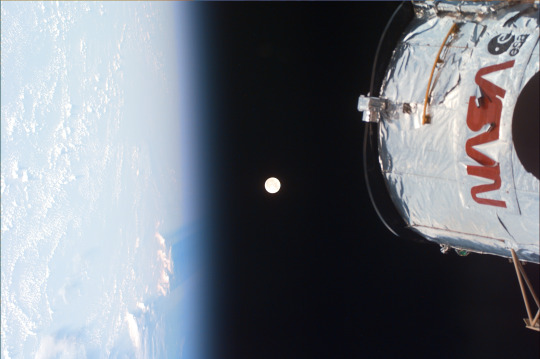
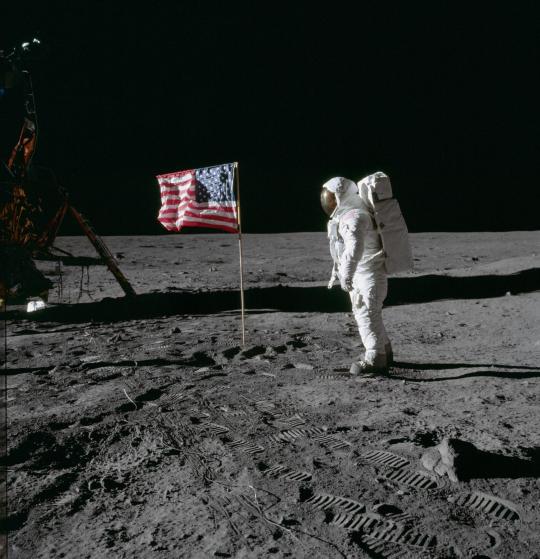
To celebrate here's a fun fact: Only twelve people have walked on the moon, meanwhile 24 people have made the trip from the earth to the moon. And only three men have gone twice: James Lovell (Apollo 8 and Apollo 13), John Young (Apollo 10 and Apollo 16) and Gene Cernan (Apollo 10 and Apollo 17) the latter was also the last person to walk on the satellite!
#Image credit: NASA#i didn't forget#I REMEMBER LAST MINUTE BUT I DIDN'T FORGET!!!#international moon day#moon day#astrophotography#astronomy#outer space#space#nasa#space exploration#space photography#astronomy facts#astrophysics#moon landing#apollo 11#space race#physics#moon#Moon day#the moon
20 notes
·
View notes
Text
No Pluto again, sorry

#Astropolls#astronomy#astrophotography#outer space#space#nasa#nasa photos#science#space exploration#space photography#solar system#mercury#venus#earth#mars#jupiter#saturn#Uranus#neptune
8 notes
·
View notes
Text
The celestial object of the day is Prometheus!
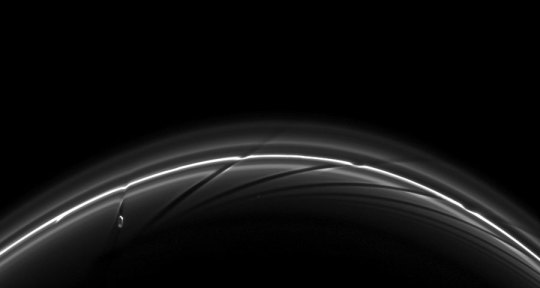
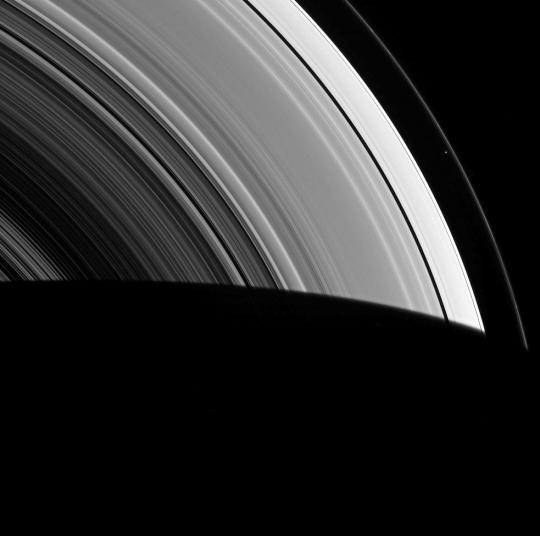
This shepherd moon (a moon that thanks to its gravitational influence helps to hold the planet's rings) generates "ring streamers" when it's closest to said ring by pulling material to itself (as shown in the first photo).
#Image credit: NASA/JPL/Space Science Institute#GUESS WHO'S BACK!!#International moon day is close so I had to come back#I'll try to be more active but I don't promise anything lmao#In the draft of this post I didn't clarify if it was Prometheus the moon or Prometheus the satellite#Hope I got the right one lmao#astronomy facts#astrophotography#astronomy#outer space#space#space exploration#space photography#astrophysics#nasa#prometheus#Prometheus moon#saturn#saturn's moons#astronomy photography#Cassini-Huygens#Celestial object of the day#I said ring so many times...
46 notes
·
View notes
Text
Space Rocks!🤘But Also ️Space Rocks!☄️

Asteroids: they’re ancient, rocky, and way cooler than you might think. June 30 is International Asteroid Day, a global event to raise awareness about asteroids and what we’re doing to study them. Here’s why we’re obsessed with them (and why you should be, too).
What are asteroids?
Asteroids are leftover building blocks from the early solar system, orbiting the Sun like planetary time capsules. Most hang out in the main asteroid belt between Mars and Jupiter, but some—called Near-Earth Objects, or NEOs—orbit closer to home. They range in size from 329 miles (530 kilometers) in diameter to less than 33 feet (10 meters) across.
Why do we study them?
Studying asteroids helps us unlock the origins of our solar system.
In 2023, our OSIRIS-REx mission collected a sample from asteroid Bennu that could reveal whether asteroids delivered water and other ingredients for life when they collided with Earth billions of years ago.

Lucy in the sky…with asteroids? Our Lucy mission, which launched in 2021, is named for a fossilized skeleton of a human ancestor, which was in turn named for the Beatles song “Lucy in the Sky with Diamonds.” Lucy is the first mission to explore asteroids that share an orbit around the Sun with Jupiter.
A timelapse of the asteroid Donaldjohanson taken on NASA’s Lucy spacecraft. The images, captured approximately every 2 seconds beginning at 1:50 p.m. EDT April 20, 2025, show a white, irregular, elongated shape rotating slowly. Its surface is covered in small craters and has a rough, uneven texture. The asteroid appears bright against a black background. Credit: NASA/Goddard/SwRI/Johns Hopkins APL
What if an asteroid hits Earth?
NASA’s Planetary Defense Program uses telescopes to keep an eye out for asteroids and other NEOs, in case any get too close for comfort. Although a catastrophic collision is highly unlikely for the next 100 years or more, the telescopes detect smaller objects on a collision course with Earth a few times per year. No need to worry—these objects are just a few feet (meters) in size and cause no damage.
youtube
Rock on!
Hungry for more? Check out our asteroid portal for a cosmic crash course, or explore a real-time visualization of every known asteroid and comet classified as an NEO with NASA’s Eyes on Asteroids app.
Make sure to follow us on Tumblr for your regular dose of space!
2K notes
·
View notes
Text
Seeing the Invisible Universe
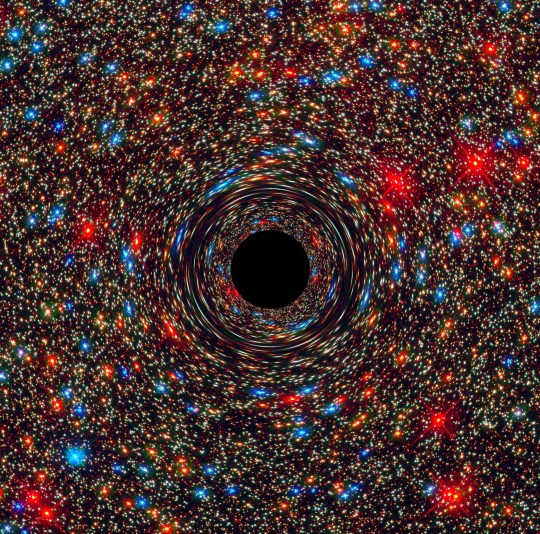
This computer-simulated image shows a supermassive black hole at the core of a galaxy. The black region in the center represents the black hole’s event horizon, beyond which no light can escape the massive object’s gravitational grip. The black hole’s powerful gravity distorts space around it like a funhouse mirror. Light from background stars is stretched and smeared as it skims by the black hole. You might wonder — if this Tumblr post is about invisible things, what’s with all the pictures? Even though we can’t see these things with our eyes or even our telescopes, we can still learn about them by studying how they affect their surroundings. Then, we can use what we know to make visualizations that represent our understanding.
When you think of the invisible, you might first picture something fantastical like a magic Ring or Wonder Woman’s airplane, but invisible things surround us every day. Read on to learn about seven of our favorite invisible things in the universe!
1. Black Holes

This animation illustrates what happens when an unlucky star strays too close to a monster black hole. Gravitational forces create intense tides that break the star apart into a stream of gas. The trailing part of the stream escapes the system, while the leading part swings back around, surrounding the black hole with a disk of debris. A powerful jet can also form. This cataclysmic phenomenon is called a tidal disruption event.
You know ‘em, and we love ‘em. Black holes are balls of matter packed so tight that their gravity allows nothing — not even light — to escape. Most black holes form when heavy stars collapse under their own weight, crushing their mass to a theoretical singular point of infinite density.
Although they don’t reflect or emit light, we know black holes exist because they influence the environment around them — like tugging on star orbits. Black holes distort space-time, warping the path light travels through, so scientists can also identify black holes by noticing tiny changes in star brightness or position.
2. Dark Matter

A simulation of dark matter forming large-scale structure due to gravity.
What do you call something that doesn’t interact with light, has a gravitational pull, and outnumbers all the visible stuff in the universe by five times? Scientists went with “dark matter,” and they think it's the backbone of our universe’s large-scale structure. We don’t know what dark matter is — we just know it's nothing we already understand.
We know about dark matter because of its gravitational effects on galaxies and galaxy clusters — observations of how they move tell us there must be something there that we can’t see. Like black holes, we can also see light bend as dark matter’s mass warps space-time.
3. Dark Energy

Animation showing a graph of the universe’s expansion over time. While cosmic expansion slowed following the end of inflation, it began picking up the pace around 5 billion years ago. Scientists still aren’t sure why.
No one knows what dark energy is either — just that it’s pushing our universe to expand faster and faster. Some potential theories include an ever-present energy, a defect in the universe’s fabric, or a flaw in our understanding of gravity.
Scientists previously thought that all the universe’s mass would gravitationally attract, slowing its expansion over time. But when they noticed distant galaxies moving away from us faster than expected, researchers knew something was beating gravity on cosmic scales. After further investigation, scientists found traces of dark energy’s influence everywhere — from large-scale structure to the background radiation that permeates the universe.
4. Gravitational Waves

Two black holes orbit each other and generate space-time ripples called gravitational waves in this animation.
Like the ripples in a pond, the most extreme events in the universe — such as black hole mergers — send waves through the fabric of space-time. All moving masses can create gravitational waves, but they are usually so small and weak that we can only detect those caused by massive collisions. Even then they only cause infinitesimal changes in space-time by the time they reach us. Scientists use lasers, like the ground-based LIGO (Laser Interferometer Gravitational-Wave Observatory) to detect this precise change. They also watch pulsar timing, like cosmic clocks, to catch tiny timing differences caused by gravitational waves.
This animation shows gamma rays (magenta), the most energetic form of light, and elusive particles called neutrinos (gray) formed in the jet of an active galaxy far, far away. The emission traveled for about 4 billion years before reaching Earth. On Sept. 22, 2017, the IceCube Neutrino Observatory at the South Pole detected the arrival of a single high-energy neutrino. NASA’s Fermi Gamma-ray Space Telescope showed that the source was a black-hole-powered galaxy named TXS 0506+056, which at the time of the detection was producing the strongest gamma-ray activity Fermi had seen from it in a decade of observations.
5. Neutrinos

This animation shows gamma rays (magenta), the most energetic form of light, and elusive particles called neutrinos (gray) formed in the jet of an active galaxy far, far away. The emission traveled for about 4 billion years before reaching Earth. On Sept. 22, 2017, the IceCube Neutrino Observatory at the South Pole detected the arrival of a single high-energy neutrino. NASA’s Fermi Gamma-ray Space Telescope showed that the source was a black-hole-powered galaxy named TXS 0506+056, which at the time of the detection was producing the strongest gamma-ray activity Fermi had seen from it in a decade of observations.
Because only gravity and the weak force affect neutrinos, they don’t easily interact with other matter — hundreds of trillions of these tiny, uncharged particles pass through you every second! Neutrinos come from unstable atom decay all around us, from nuclear reactions in the Sun to exploding stars, black holes, and even bananas.
Scientists theoretically predicted neutrinos, but we know they actually exist because, like black holes, they sometimes influence their surroundings. The National Science Foundation’s IceCube Neutrino Observatory detects when neutrinos interact with other subatomic particles in ice via the weak force.
6. Cosmic Rays

This animation illustrates cosmic ray particles striking Earth's atmosphere and creating showers of particles.
Every day, trillions of cosmic rays pelt Earth’s atmosphere, careening in at nearly light-speed — mostly from outside our solar system. Magnetic fields knock these tiny charged particles around space until we can hardly tell where they came from, but we think high energy events like supernovae can accelerate them. Earth’s atmosphere and magnetic field protect us from cosmic rays, meaning few actually make it to the ground.
Though we don’t see the cosmic rays that make it to the ground, they tamper with equipment, showing up as radiation or as “bright” dots that come and go between pictures on some digital cameras. Cosmic rays can harm astronauts in space, so there are plenty of precautions to protect and monitor them.
7. (Most) Electromagnetic Radiation

The electromagnetic spectrum is the name we use when we talk about different types of light as a group. The parts of the electromagnetic spectrum, arranged from highest to lowest energy are: gamma rays, X-rays, ultraviolet light, visible light, infrared light, microwaves, and radio waves. All the parts of the electromagnetic spectrum are the same thing — radiation. Radiation is made up of a stream of photons — particles without mass that move in a wave pattern all at the same speed, the speed of light. Each photon contains a certain amount of energy.
The light that we see is a small slice of the electromagnetic spectrum, which spans many wavelengths. We frequently use different wavelengths of light — from radios to airport security scanners and telescopes.
Visible light makes it possible for many of us to perceive the universe every day, but this range of light is just 0.0035 percent of the entire spectrum. With this in mind, it seems that we live in a universe that’s more invisible than not! NASA missions like NASA's Fermi, James Webb, and Nancy Grace Roman space telescopes will continue to uncloak the cosmos and answer some of science’s most mysterious questions.
Make sure to follow us on Tumblr for your regular dose of space!
4K notes
·
View notes
Photo

2025 April 9
HH 49: Interstellar Jet from Webb Image Credit: NASA, ESA, CSA, STScI, JWST
Explanation: What’s at the tip of this interstellar jet? First let’s consider the jet: it is being expelled by a star system just forming and is cataloged as Herbig-Haro 49 (HH 49). The star system expelling this jet is not visible – it is off to the lower right. The complex conical structure featured in this infrared image by the James Webb Space Telescope also includes another jet cataloged as HH 50. The fast jet particles impact the surrounding interstellar gas and form shock waves that glow prominently in infrared light – shown here as reddish-brown ridges. This JWST image also resolved the mystery of the unusual object at HH 49’s tip: it is a spiral galaxy far in the distance. The blue center is therefore not one star but many, and the surrounding circular rings are actually spiral arms.
∞ Source: apod.nasa.gov/apod/ap250409.html
200 notes
·
View notes
Text
The celestial object of the day is 624 Hektor!
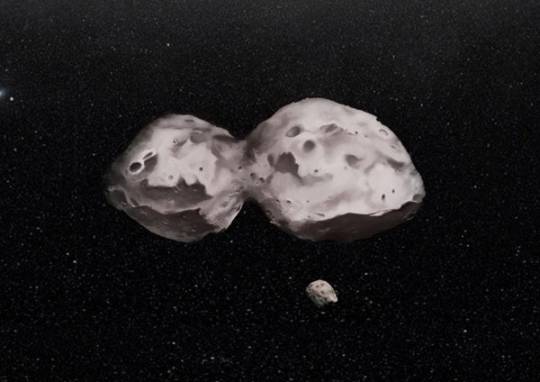
This weird-looking object, measuring 403 km in its longest dimension and 201 km in its shortest, is 624 Hektor. It is theorized to be a contact asteroid i.e. two asteroids attached to eachother because of their gravitational force
#Image credit: H. Marchis/F. Marchis#Fun fact: This (trojan) asteroid orbits in Jupiter's L4 point#Also called the greek node or camp#I think is a little funny considering mythology lol#And on the L5 point (also called the Trojan node or camp)#Is the asteroid 617 Patroclus lol#astronomy facts#astronomy#astrophotography#astrophysics#space photography#space exploration#outer space#space#asteroid#asteroids#jupiter#Trojan asteroids#hektor#624 hektor
17 notes
·
View notes
Photo

Fireworks Galaxy NGC 6946
Credits: Adam Block, Mt. Lemmon SkyCenter, U. Arizona
388 notes
·
View notes
Text








True color images of every planet in our solar system
6K notes
·
View notes
Text
The celestial object of the day is CoRoT-7b!


This exoplanet completes an orbit around its star in only 20 hours. Because of its proximity, the temperature reaches 2,000°C on the day-side and -200°C on the night-side.
It's thought that the harsh climate evaporates its surface rock, forming a thin atmosphere (1% of Earth's) of sodium, oxygen, and silicon monoxide. These may rain as minerals like spinel, enstatite, and corundum from the daylight side
32 notes
·
View notes




